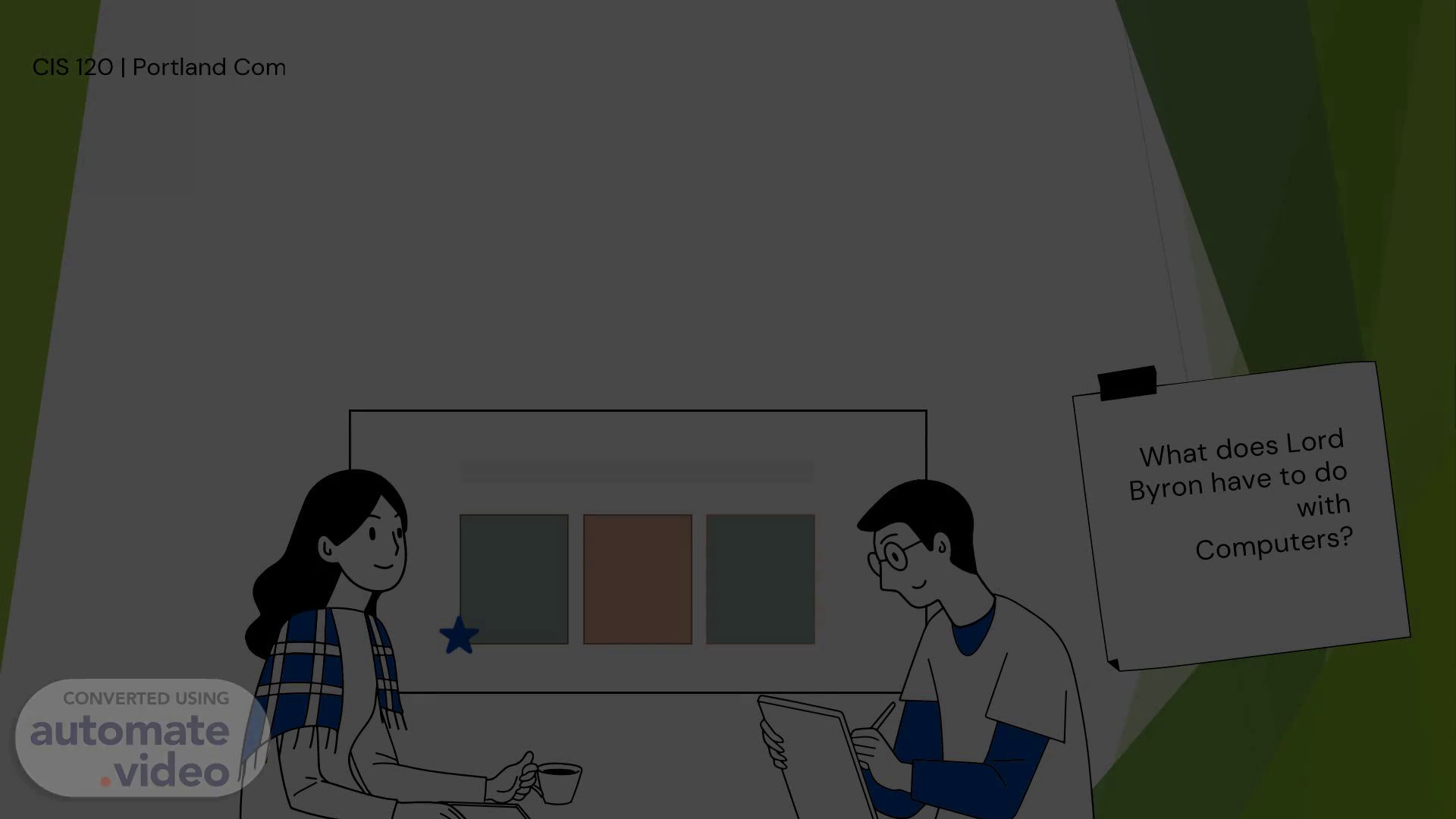
Microsoft PowerPoint: Practice Activity
Scene 1 (0s)
Microsoft PowerPoint: Practice Activity. What does Lord Byron have to do with Computers?.
Scene 2 (22s)
[Audio] Lord Byron is a renowned English poet and philosopher born in 1788. He was a major figure in the Romantic Movement in literature and his works included poetry plays and novels. His poetry won admiration and influenced later generations of writers. although he is not by association linked to computers he was actually an early adopter of the technology having owned one of the first available "mechanical brains" a type of mechanical calculator. He also wrote a poem in 1817 which described computers as a "magic number-weaving" machine. Lord Byron then was both an early adopter of technology and an inspirational figure to many..
Scene 3 (1m 5s)
[Audio] Lord Byron is a British poet well-known for his works in the early 19th century and widely celebrated even now. But how is he related to the world of computers? In this slide we will take a deeper look at this question..
Scene 4 (1m 20s)
[Audio] Ada Lovelace born Augusta Ada Byron in 1815 was an incredible woman who had an immeasurable impact on the world of computing. In 1843 she created a program that is widely regarded as the world's first computer program cementing her place in history. Despite her passing in 1852 Lovelace's legacy continues to live on..
Scene 5 (1m 44s)
[Audio] Lord Byron may not generally be known for his technological accomplishments but he should still be remembered for one: he wrote the first ever program for a computer. Through his algorithm he was able to direct the movements of a mechanical turk an early 19th century chess-playing machine and precursor of modern computers. So the next time you think of Lord Byron consider his contribution to computer technology as the first ever computer programmer..
Scene 6 (2m 12s)
[Audio] Katherine Johnson was a female mathematician who made a remarkable contribution to the success of the Project Mercury. Born in 1918 and passing away in 2020 she was responsible in 1962 for the calculations that helped ensure the safe orbit and return of John Glenn’s spaceflight. Johnson's intelligence and dedication to her craft made her a role model for generations to come..
Scene 7 (2m 37s)
[Audio] ARPANET developed by the Advanced Research Projects Agency marked an immense advancement in the progress of computer networking. On October 29 1969 the earliest message was sent across the network an important moment in computing history. This development gave rise to the development of packet-switching technology and the World Wide Web derived from the implementation of the TCP/IP protocol. By comprehending the genesis of these undertakings we can recognize the innovation of those who established them a reality..
Scene 8 (3m 1s)
[Audio] Lord Byron the 19th century poet and playwright is responsible for a surprising influence on our world today. Steve Jobs one of the world's most influential figures was deeply inspired by a calligraphy class he took at Reed College. This course taught students to express their ideas using the art of calligraphy which had been practiced by Lord Byron centuries earlier. Steve Jobs appreciated and adopted this practice and attributed a lot of his success to it. This proves that even though there may not be an obvious connection between Lord Byron and computers inspiration can come from the most unexpected places. Consequently Lord Byron's legacy still lives on today in the world of computing thanks to Steve Jobs' success..
Scene 9 (3m 4s)
[Audio] Larry Page and Sergey Brin met in 1995 as graduate students at Stanford University and founded Google initially called BackRub due to its capacity to analyze the "back links" of a website. This brings us to the question: How is Lord Byron connected to computers? To answer this we must look to two of the most influential tech founders Larry Page and Sergey Brin..
Scene 10 (3m 11s)
[Audio] Without further ado I'd like to share an interesting tidbit: one of the most influential figures in the history of computers Lord Byron had no idea of the technology he would one day inspire. Let's thank him for his contribution in making the use of technology today more accessible. Now that we have discussed the tools available to us I am confident you have a better understanding of the powerful capabilities that lie within the technology we use today. I hope you have some new ideas and techniques you can take away with you. Thank you for your attention..